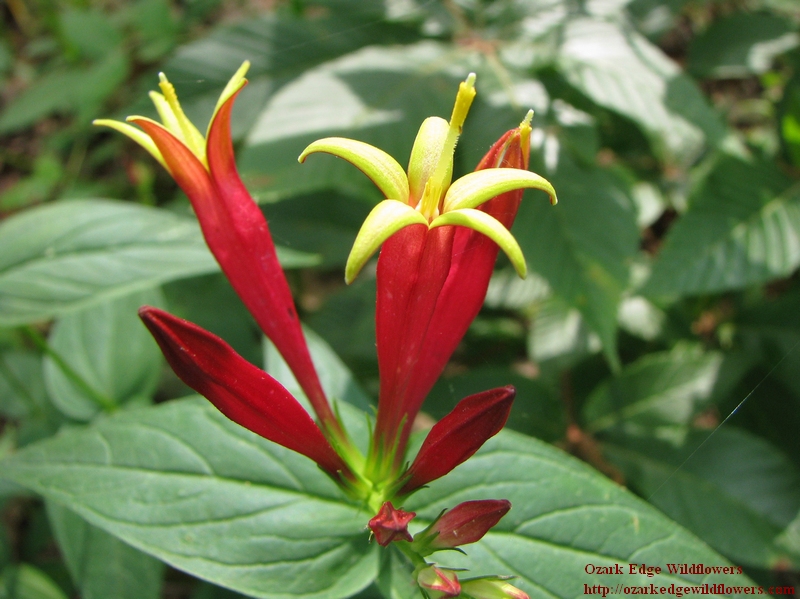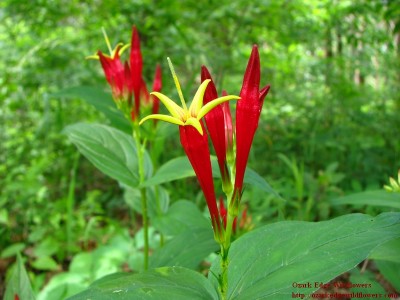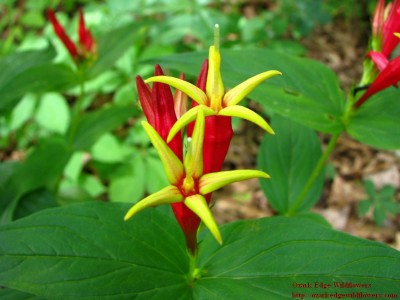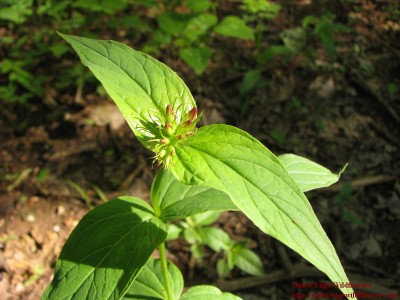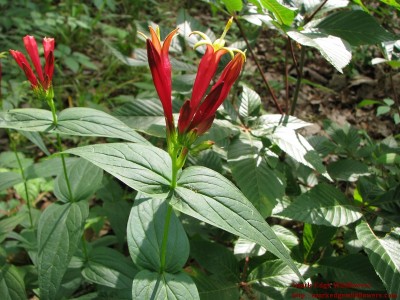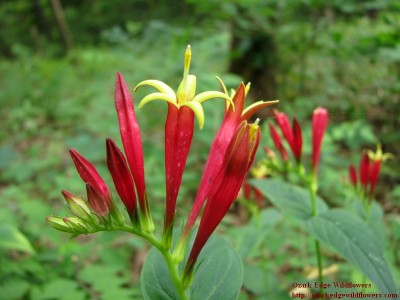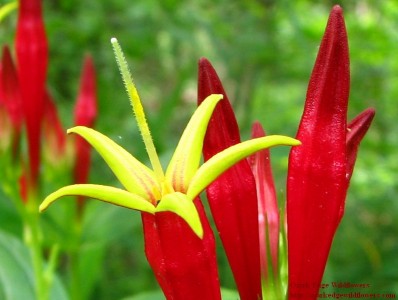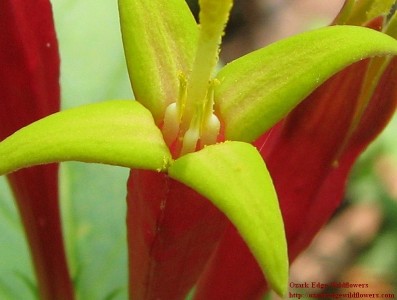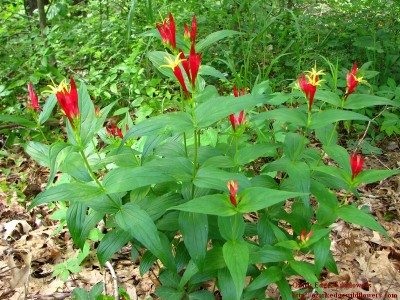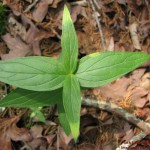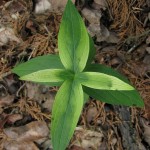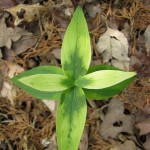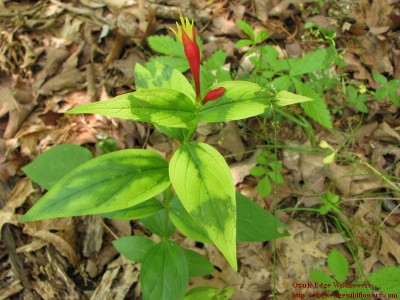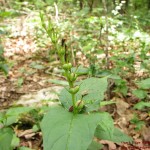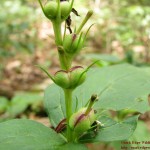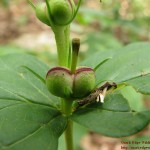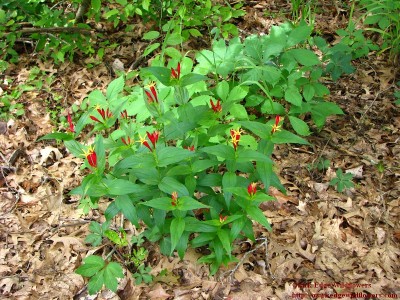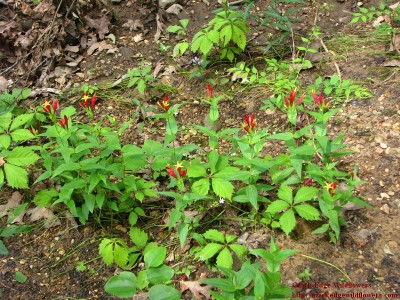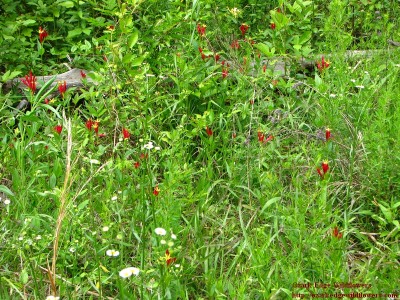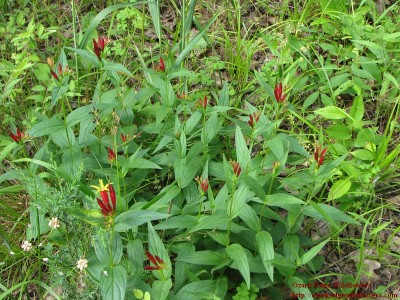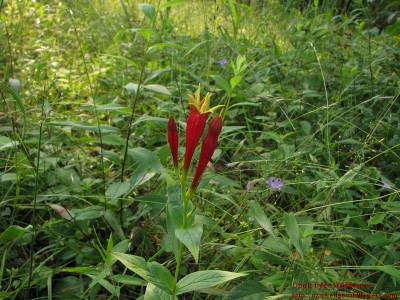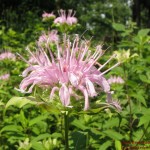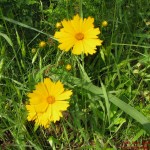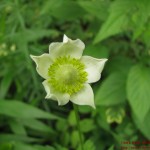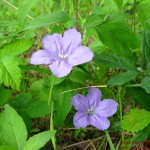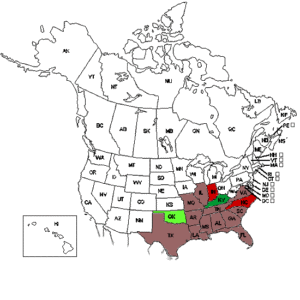Stunningly beautiful, Spigelia marilandica simply lights up the woodlands. The trumpet-shaped flowers have a yellow center that glows like a lantern when struck by the sun. This wildflower is just about perfect in all respects.
Latin Name/Common Name- Spigelia marilandica is a perennial in the Loganiaceae family. This family consists primarily of tropical plants. The plant genus Spigelia was named in honor of Adriaan van den Spiegel (1578- 1625), a Belgian physician and anatomist who also practiced botany. Dr. van den Spiegel also described an uncommon abdominal hernia which bears his name- Spigelian hernia.
Common names include Indian pink, Pinkroot, Woodland pinkroot and Worm grass.
Bloom Color- The flower of Spigelia marilandica is one of nature’s most striking color combinations. The scarlet red corolla flares at its top to display a central star of vivid yellow.
Scarlet and yellow make a striking color combination
A yellow star is seen by looking down on the flower
Description- Spigelia marilandica grows in clumps reaching 1-2 feet. Each clump produces numerous four-sided stalks that arise from fibrous roots. The leaves are opposite, sessile and lanceolate with a rounded base and smooth margins. They have a slight pubescence underneath. At maturity, they reach a dark, true green color. I’ve observed that many plants on Ozarkedge develop variegated leaves with yellow streaks. Some just have yellow tips, but in others the dark green is nearly replaced with yellow. The plants are otherwise healthy and proceed to bloom. I’m not sure what causes the yellow leaves, but perhaps it is associated with the soil ph or possibly a virus. I haven’t uncovered any information regarding this in my research.
The stalk terminates into a single-sided raceme of tubular shaped scarlet flowers. Each flower flares toward its tip and opens to reveal a yellow star.
The style and stigma grow up through the anthers, ensuring self-pollination. The style protrudes past the corolla. The stigma is the fringed end of the style.
Young plant with buds
Plant in peak bloom
Terminal spike with flowers along one side
Blooming plant with spent flowers
Long fringed style
Five stamens project beyond the flower
A single plant produces many blooms
Leaves on 3 plants in same vicinity with varying amount of yellow
Flowering plant with yellow and green leaves
The seed capsule consists of 2 round capsules joined in the center. They gradually change from green to black as they ripen. In July, the seed capsule will dehisce (open to release seeds). It does so explosively and the seeds are widely dispersed.
Seed pods soon after flowering
Bloom Time- Blooming at the cusp of spring and summer, after the spring ephemerals have faded, Spigelia marilandica is a welcome site.
Habitat- Spigelia marilandica prefers a partially shady habitat and is commonly found at the borders of rich, moist woods, with a preference for rocky sites. On Ozarkedge, I have found it growing at woodland borders as well as deep within woods having some dappled sunlight.
This is an excellent garden plant and is easy to start from seed. I Spigelia marilandica is a perennial, but don’t give up on it in the spring. It’s a bit later to awaken and send up its new greenery than many other spring plants.
A deep bed of oak leaves provides nutrients to this plant growing in the woods
Spigelia marilandica in moist woodland habitat
This Spigelia marilandica is growing in partial shade with Erigeron strigosus
What’s Growing Nearby? – Spigelia marilandica has many friends at the woodland border, both grasses and flowers. Chasmanthium latifolium, river oats is one of the more distinctive nearby grasses. The flowers you may find blooming nearby include Monarda fistulosa (Wild bergamot), Coreopsis grandiflora (Coreopsis), Anenome virginiana (Thimbleweed), Ruellia strepens (Woodland Petunia), and Erigeron strigosus (Daisy fleabane).
Spigelia marilandica with native grasses and the seed pods from Allium canadense
Pretty purple blooms of Ruellia pedunculata blooming in sync with Spigelia marilandica
Monarda fistulosa, Coreopsis grandiflora
Anenome virginiana, Ruellia pedunculata
Endangered List- According to the USDA site, Spigelia marilandica is on the Endangered list in Indiana. Its range is from the East coast of the US, as far north as the southern tip of Illinois and west to a few eastern counties in Texas. In Missouri, it is known in only ten southeastern counties.
http://plants.usda.gov/java/profile?symbol=SPMA3
North Carolina lists Spigelia marilandica as Endangered. This information has not been updated to the USDA page. You can read more about it here- http://www.ncagr.gov/plantindustry/plant/plantconserve/plist.htm
Natureserve lists Spigelia marilandica as Critically Imperiled in Indiana and North Carolina. It is Secure in Kentucky and Apparently Secure in Oklahoma. Unfortunately, it is Not Ranked in all other states in its range. See below.
*NatureServe. 2017. NatureServe Explorer: An online encyclopedia of life [web application]. Version 7.1. NatureServe, Arlington, Virginia. Available http://explorer.natureserve.org. (Accessed: July 2, 2017 ).
Interesting Tidbits- This is one of the top 10 plants for attracting hummingbirds according to Operation Ruby Throat. http://www.rubythroat.org/PlantsNativeTopTen.html
